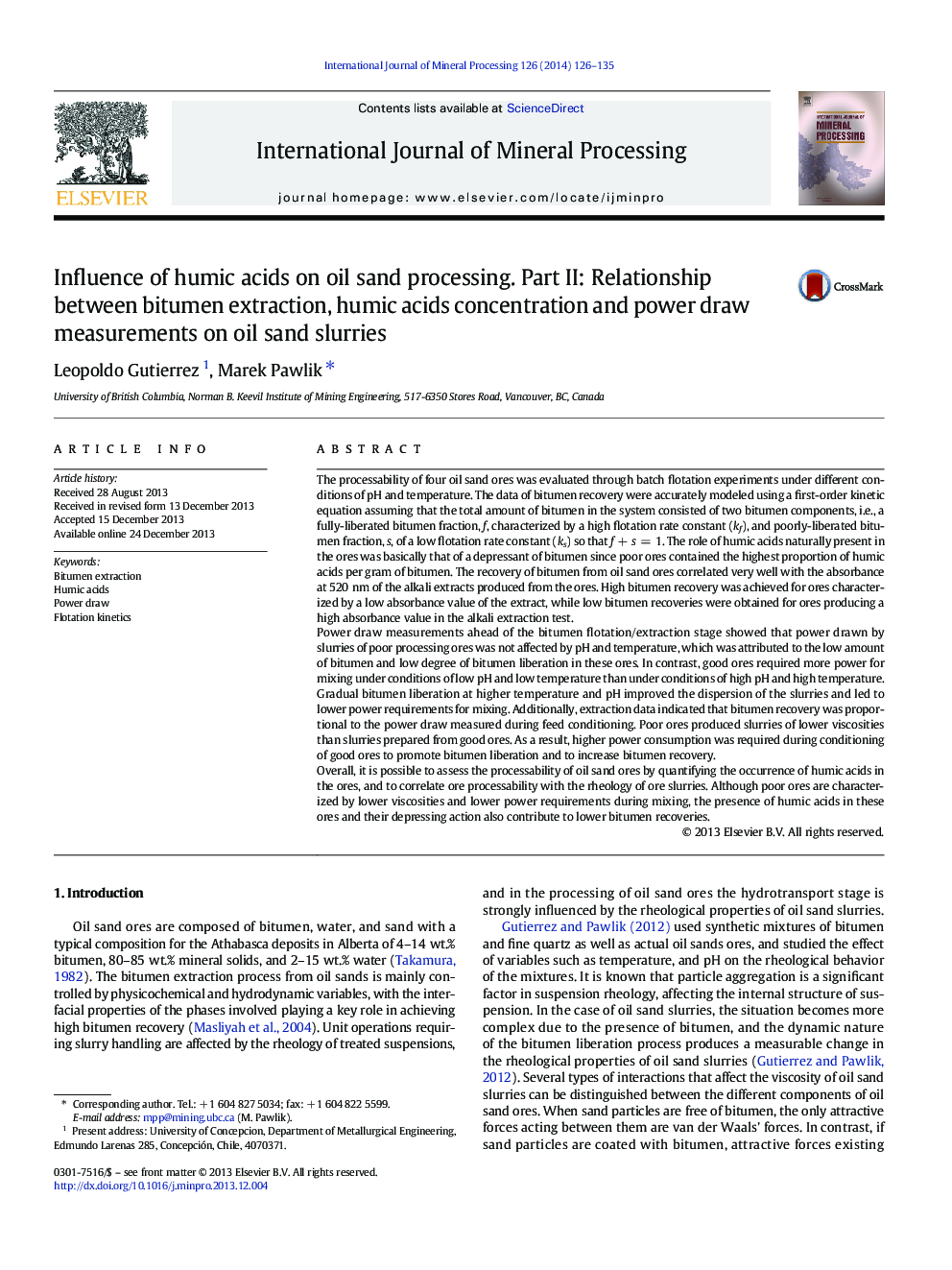| کد مقاله | کد نشریه | سال انتشار | مقاله انگلیسی | نسخه تمام متن |
|---|---|---|---|---|
| 214017 | 1425807 | 2014 | 10 صفحه PDF | دانلود رایگان |
• Relationship between power draw (rheology) and bitumen recovery
• Relationship between humic acid content and bitumen recovery
• Prediction of ore processability based on alkali extraction
• Modeling bitumen recovery using first-order two-component flotation kinetics
The processability of four oil sand ores was evaluated through batch flotation experiments under different conditions of pH and temperature. The data of bitumen recovery were accurately modeled using a first-order kinetic equation assuming that the total amount of bitumen in the system consisted of two bitumen components, i.e., a fully-liberated bitumen fraction, f, characterized by a high flotation rate constant (kf), and poorly-liberated bitumen fraction, s, of a low flotation rate constant (ks) so that f + s = 1. The role of humic acids naturally present in the ores was basically that of a depressant of bitumen since poor ores contained the highest proportion of humic acids per gram of bitumen. The recovery of bitumen from oil sand ores correlated very well with the absorbance at 520 nm of the alkali extracts produced from the ores. High bitumen recovery was achieved for ores characterized by a low absorbance value of the extract, while low bitumen recoveries were obtained for ores producing a high absorbance value in the alkali extraction test.Power draw measurements ahead of the bitumen flotation/extraction stage showed that power drawn by slurries of poor processing ores was not affected by pH and temperature, which was attributed to the low amount of bitumen and low degree of bitumen liberation in these ores. In contrast, good ores required more power for mixing under conditions of low pH and low temperature than under conditions of high pH and high temperature. Gradual bitumen liberation at higher temperature and pH improved the dispersion of the slurries and led to lower power requirements for mixing. Additionally, extraction data indicated that bitumen recovery was proportional to the power draw measured during feed conditioning. Poor ores produced slurries of lower viscosities than slurries prepared from good ores. As a result, higher power consumption was required during conditioning of good ores to promote bitumen liberation and to increase bitumen recovery.Overall, it is possible to assess the processability of oil sand ores by quantifying the occurrence of humic acids in the ores, and to correlate ore processability with the rheology of ore slurries. Although poor ores are characterized by lower viscosities and lower power requirements during mixing, the presence of humic acids in these ores and their depressing action also contribute to lower bitumen recoveries.
Journal: International Journal of Mineral Processing - Volume 126, 10 January 2014, Pages 126–135
